
The South Island of New Zealand is the country’s larger (but less-populated) island…but it’s also the most visually stunning. With just 23% of the country’s 5.2 million inhabitants, it’s a dramatic and beautiful island, home to wineries, wildlife, high-octane adventure sports, and pristine beaches. This is the island that people end up spending more time in and, while everyone sticks to just a few locations, there’s a lot of hidden areas here worth exploring.
At a minimum, you’ll want to spend two weeks exploring. Anything less than that and you’ll feel rushed. As I said, there’s a lot to see here. That way you can see the big draws, get off the beaten path, do some good hiking, and not rush (travel between places can take longer than you think)!
With two weeks to traverse New Zealand’s South Island, what route should you take? Where should you start, and where should you finish?
Below is my suggested itinerary to help you plan your South Island road trip to will ensure that you see the highlights, make the most of your time, and get off the beaten path.
New Zealand Highlights: South Island
Just looking for a few pointers to start your planning? These are things I think every visitor should experience:
- Hike and marvel at the Franz Josef Glacier
- Go skydiving in Queenstown
- Ride the gondola in Christchurch
- Chill out on a boat cruise in Wanaka
- Explore the fjords of Fiordland National Park
Looking to see the other island? Check out my detailed road trip itinerary for the North Island!
Choosing the Right Vehicle
Before you plan your route, you need a way to get around. Road-tripping New Zealand by campervan is very popular, especially among budget-conscious travelers, as the vehicle serves as both accommodation and transportation. If you want a campervan, there are five main rental agencies:
Prices vary a lot. Your daily rate will change depending on where you pick up the vehicle, if you are dropping it off at a different place, how long you are renting it for, how far in advance you book, and when during the year you book (in the high season, prices seem to double!).
If living out of a van for a few weeks doesn’t sound like your idea of a fun time, simply rent a normal car and book accommodation along the way. Discover Cars is my go-to rental site, as they search rental agencies big and small to find the best deals.
You can use this widget to get a free quote for your car rental:
New Zealand Road Trip Itinerary: A Two-Week South Island Route
Start your trip in Queenstown. Even if your international flight lands in Auckland on the North Island, you can easily get a cheap flight to Queenstown, which also has direct flights to many major cities in Australia if your trip to New Zealand is part of a larger adventure.
Days 1–3: Queenstown
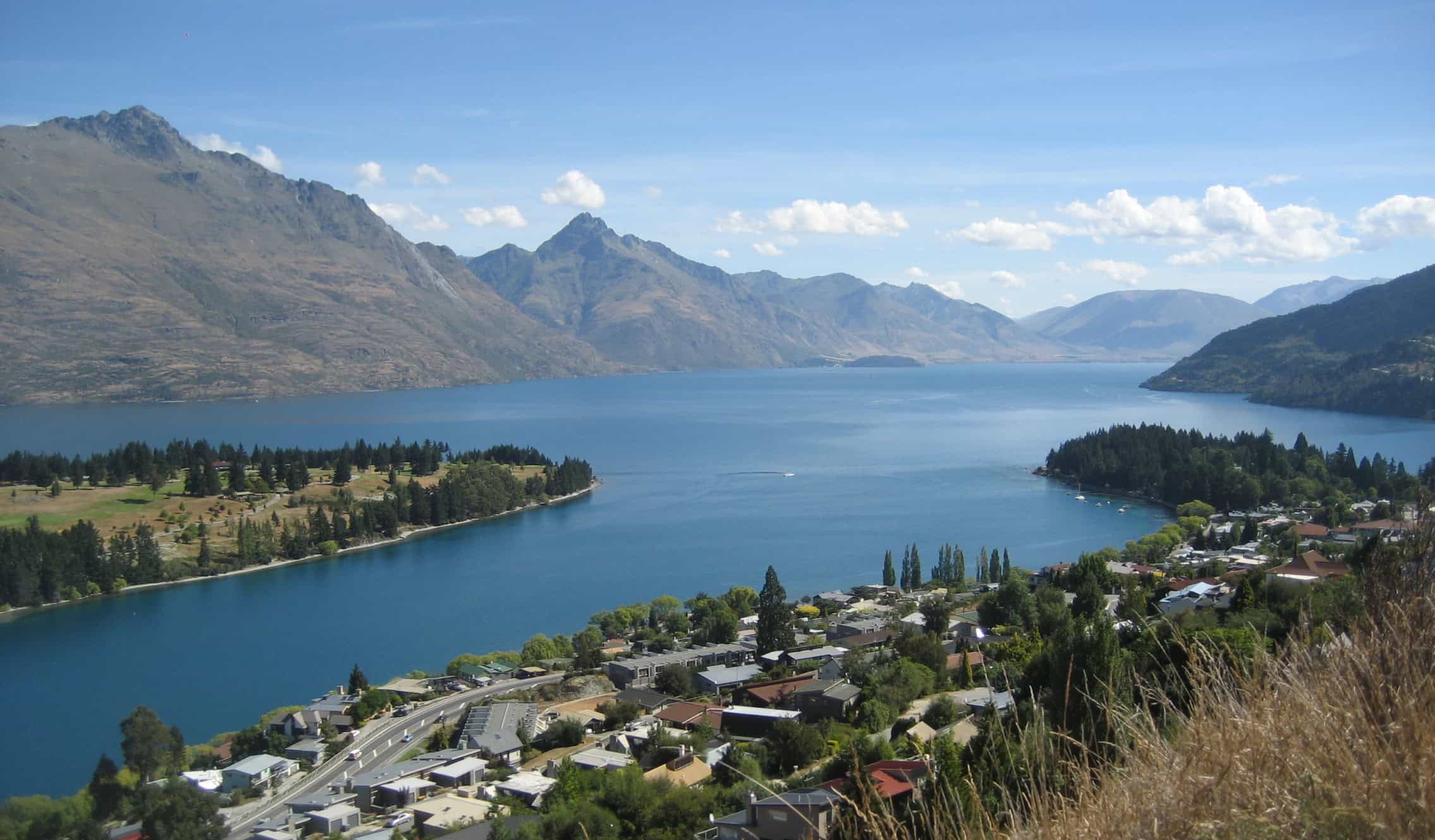
Queenstown is a picturesque town overlooking Lake Wakatipu and surrounded by the beautiful peaks of the Remarkables mountain range. It has an outdoorsy energy, with pedestrian lanes filled with shops and restaurants. Even though it has become hugely popular, I cannot express my love of Queenstown enough. I love sitting by the lake, watching the sunset with a bottle of wine, and hiking the nearby trails.
Queenstown is also known as “the adventure capital of New Zealand.” It’s the launching pad for every sort of adventure activity you can think of, including zip-lining, bungee jumping, canyon swinging, rafting, and even skydiving. You can also try more unique activities like river surfing, jet-boating, go-karting, paddle-boarding, and paragliding.
For something more laid-back, take a wine tour in and around Queenstown. I always do this when I visit (the grape of choice here is the light-red Pinot Noir). If wine isn’t your thing, enjoy a relaxing cruise on Lake Wakatipu for some stunning views!
For a list of more things to do in Queenstown, check out my detailed guide.
Where to Stay: Nomads Queenstown – Most rooms in this social hostel have balconies, the showers have excellent water pressure, and the pillows are thick and comfy. There are activities every night and a free dinner and quiz night on Sunday. It’s a fun and affordable place to stay.
Days 4–6: Fiordland
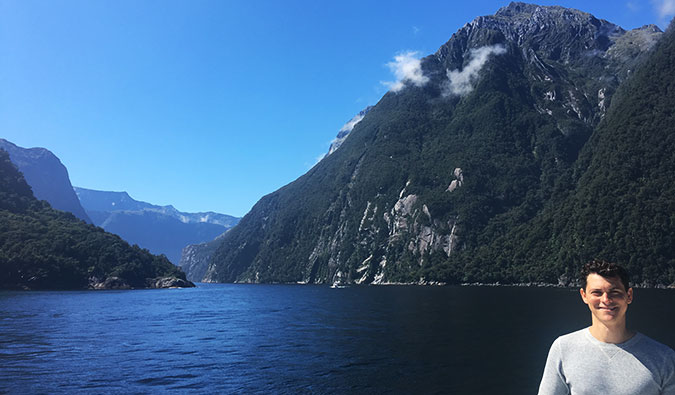
Named for its resplendent fjords (long, narrow inlets banked by steep cliffs, created by glaciers), Fiordland is one of the country’s most scenic and remote regions. (It’s home to numerous Lord of the Rings filming locations). Boasting gigantic mountains, deep lakes, swelling rivers, and untamed forests, the land is officially off-limits so as to protect these natural resources.
I loved the area here. There’s a lot of good hiking and beautiful views. There are many fjords and sounds to explore in Fiordland National Park, but I particularly love Milford Sound. This amazing fjord is best known for the towering Mitre Peak and its surrounding rainforest. You can stroll the wooded shoreline trail for perfect views of the peak, or take the Chasm Walk on the Cleddau River to get close to powerful waterfalls.
The fjord itself is home to seal and penguin colonies. You can often see pods of dolphins frolicking in the waters too. Explore by boat and check out the Milford Discovery Centre and Underwater Observatory to see rare black coral and other underwater life. Southern Discoveries is the only company doing cruises that include the Underwater Observatory, starting from 165 NZD.
While less well known than Milford, Doubtful Sound is the deepest and second-largest fjord in the country. You can only get to Doubtful via boat. A wilderness cruise of Doubtful Sound costs 299 NZD.
If you like hiking, one of the most popular walks in the national park is the Kepler Track, passing under snow-covered mountain peaks and lush verdant forests. It’s very close to the Te Anau basecamp, and the easy access and scenic views along the way make it a great choice. The whole loop is 37 miles (60 kilometers). It takes three or four days to complete.
Note: There’s limited bus service in the area so having a car here would be very helpful.
Where to Stay: Milford Sound Lodge – This is the only place to stay nearby. It’s not cheap, but the views are unmatched, the complimentary breakfast is delicious, and the contemporary rooms are cozy yet modern. If you don’t mind driving a bit more, you can stay in the closest town, Te Anau.
Days 7–8: Wanaka
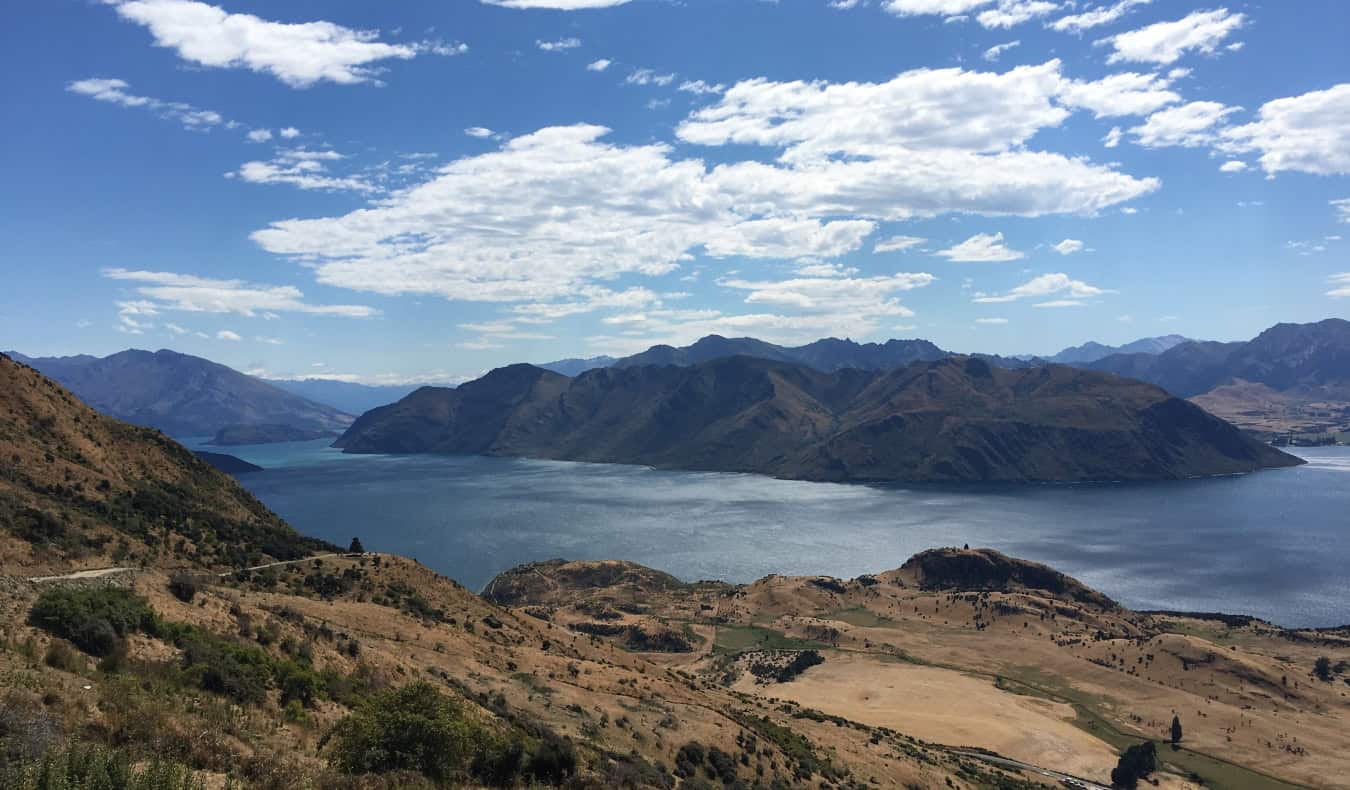
Wanaka is a resort town framed by snow-capped mountains. As nearby Queenstown has become overcrowded in recent years, travel to Wanaka has exploded (and, in a way, also become overcrowded because it’s super small). It’s become popular with backpackers and outdoor enthusiasts, especially skiers and boaters. There’s not a ton to do besides enjoying the outdoors (which is what I love about it). Most people come for a few nights to hike (or ski in the winter), relax, and move on.
Wanaka has become something of a smaller version of Queenstown, so you can expect plenty of adventure sports opportunities. I’m not an adrenaline junkie (and I don’t like heights). But if it’s your cup of tea, you can go skydiving, canyoning, rock-climbing, paragliding, jet-boating, or mountaineering, along with scores of other activities that will get your heart pounding.
You can take a happy hour boat cruise, go fishing or hiking, or do another wine tour (there’s no such thing as too many wine tours!).
The food scene here is really great too.
For a list of more things to do in Wanaka, check out my detailed guide.
Where to Stay: Mountain View Backpackers – This social hostel has a huge outdoor space with a grill, and a big table to congregate around that makes meeting people a breeze. I had many enjoyable nights spent drinking wine outside here while I chatted with other travelers.
Day 9: Franz Josef Glacier
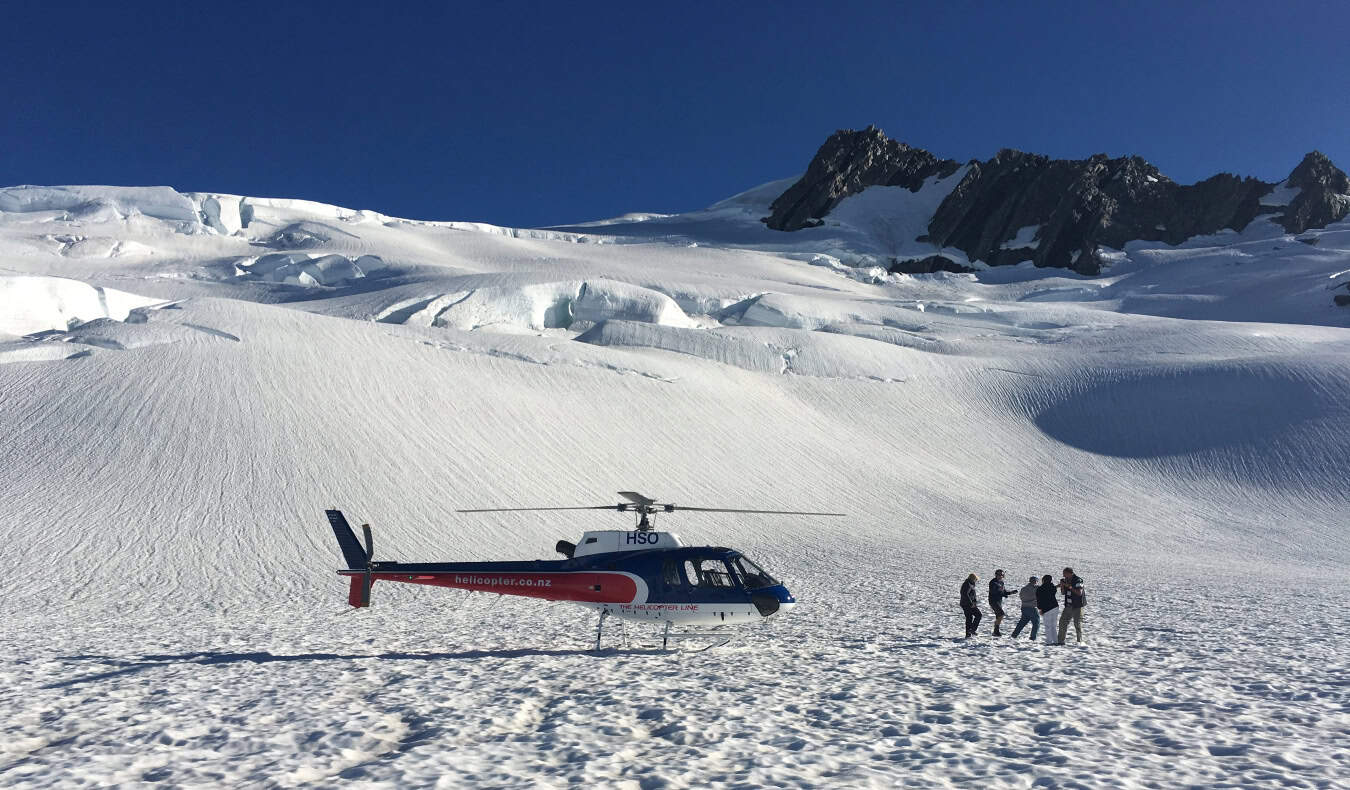
In 1865, Julius von Haast christened the large, beautiful glacier on the South Island of New Zealand “Franz Josef Glacier” after the then-monarch of the Austro-Hungarian Empire. The name stuck, and today the glacier is a major tourist attraction.
Hiking the glaciers is an unforgettable experience. Sadly, because they have receded and are melting quickly due to climate change, the caves and trails have been shut down. Now, the only way to trek on them is via heli-hike (an epic half-day or full-day helicopter/hiking experience). These are expensive (500 NZD), but the helicopter ride, trekking, and experience as a whole are worth the price in my opinion. It’s one of those once-in-a-lifetime experiences you won’t regret.
Conversely, you can just hike to the glacier face and take photos from a distance. There are tons of viewing points (where you’ll also see sobering photos of just how far the glaciers have receded over the years).
There are also a lot of activities to do nearby. You can go trekking through a rainforest (yes, there is a rainforest nearby), admire towering waterfalls, and swim (or go kayaking) in pristine lakes. There are also some natural thermal pools that you can take a soak in to soothe your post-hike muscles.
Where to Stay: Chateau Backpacker & Motels – Just a ten-minute drive from the glacier, this accommodation offers guests free homemade soup every night and free breakfast (including homemade waffles and pancakes). It has two communal kitchens if you want to cook, and a hot tub for relaxing. It’s a lively, social spot.
Days 10–11: Abel Tasman National Park
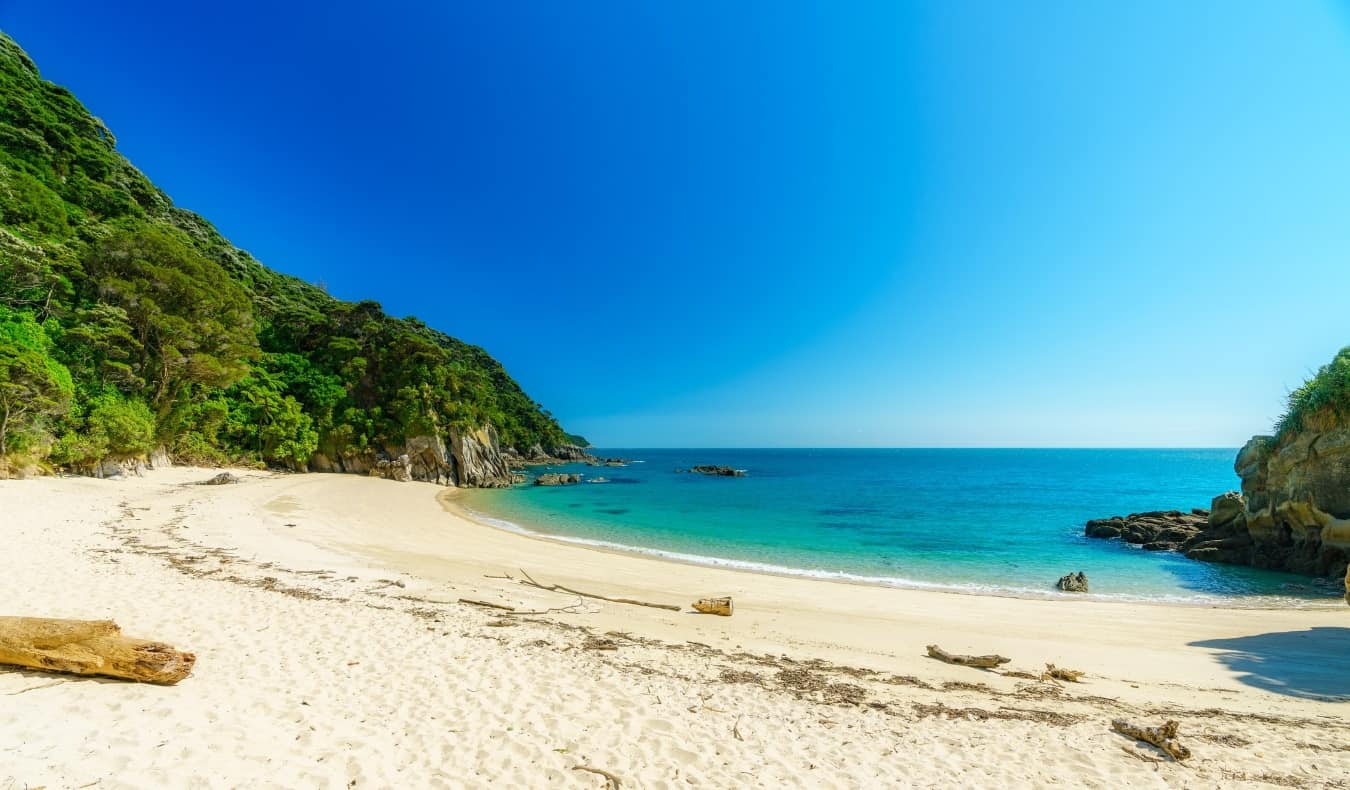
Drive just six hours north of glacial Franz Josef and you’ll be in beachy Abel Tasman National Park, New Zealand’s smallest national park. With its turquoise water, dense jungles, and warm temperatures, you’ll feel like you’re in the tropics rather than New Zealand. It covers over 23,876 hectares (59,000 acres), meaning there are a lot of single and multiday hikes. The most famous is the 3-5-day Abel Tasman Coast Track, one of the Great Walks of New Zealand.
The best way to see the park is by kayak. That way, you can explore all the little coves and beaches that really make the area special. Full-day rentals start at around 110 NZD, or you can join a guided kayaking tour starting at 190 NZD. You can also take a scenic cruise around the park for 95 NZD.
If you’re aching for some serious surf, sand, and sun time, head to Te Puketea Bay. This pristine, crescent-shaped beach hugs up against turquoise waters, and lounging here is worth the journey to Abel Tasman alone. You can also walk up to the centuries-old Maori fort, called Pa, for excellent views of the surrounding nature.
Where to Stay: Marahau Beach Camp – This accommodation offers dormitories and small private cottages, a communal kitchen, and a seasonal restaurant. There are also tent and campervan sites if you want to save money. It’s a chill, no-frills spot.
From here, pick your last stop: either drive onward to Christchurch and end there, or take the ferry over to Wellington (an adventure in and of itself!) and end there. Either way, you’ll be able to catch a cheap and quick flight back to Auckland for your international flight home.
If you’re heading to Christchurch, keep reading. If you’d like to visit Wellington, check out my North Island itinerary here.
Days 12–14: Christchurch
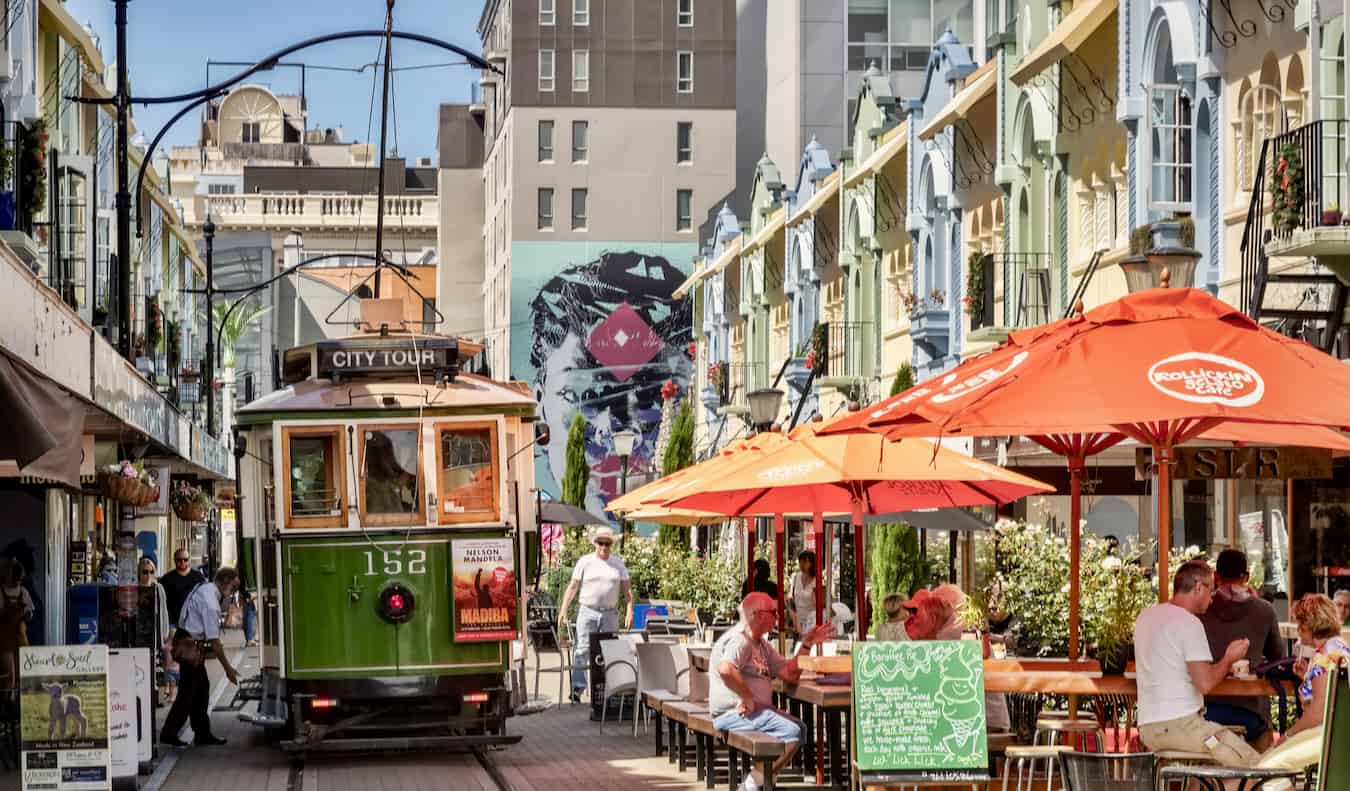
Though severely damaged by earthquakes in 2010 and 2011 (over 185 people were killed and 3,000 buildings were damaged), Christchurch has rebounded and evolved into a brand-new city. This revival has instilled a newfound sense of hope and vibrancy, with more funky bars and markets, as well as new restaurants, shops, and exhibits. The locals have worked hard to rebuild, and there is a community spirit here that really shines. I love where Christchurch is going and I’m happy to see its revival.
While there’s not a lot “to do” per se, the vibe is really relaxed, and it’s worth taking your time if you can. Be sure to ride the gondola, visit the Canterbury Museum, and tour Quake City (a unique and interactive museum that recounts personal stories from the 2010 and 2011 earthquakes).
For a list of more things to do in Christchurch, check out my city guide.
Where to Stay: Urbanz– This is an awesome hostel downtown, with friendly staff and a huge kitchen. There’s also a bar, a pool table, fast Wi-Fi, laundry, movies, and comfy couches, as well as a parking lot.
Things to Remember When Road-Tripping New Zealand
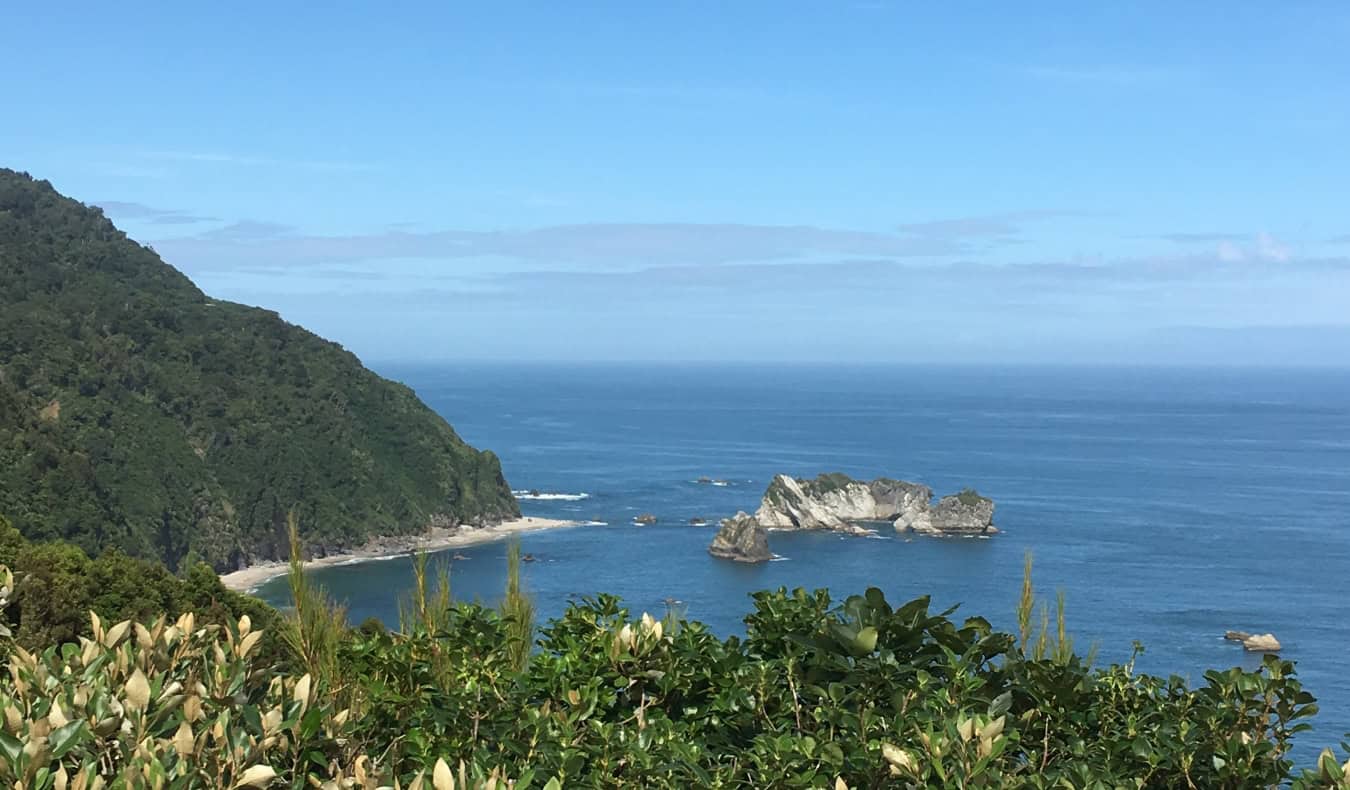
To help you make the most of your road trip, please remember the following rules:
- Traffic flows on the left here (not the right, like in the US or Canada).
- You must always park your car in the direction that traffic is going (or risk a fine).
- There are plenty of pull-off points for taking photos — use them instead of stopping at a random spot along the side of the road, which can be quite dangerous given how tight the roads are here.
- Roads here are winding, so remember that it might take longer than you expect to cover a particular distance.
- As long as your current and valid driver’s license is in English, you don’t need an International Driver’s Permit.
- If you’re traveling by campervan, use the CamperMate app to find nearby campsites, gas stations, and dump stations.
New Zealand’s South Island is an unforgettable destination, where I always have a blast. It’s a region loaded with epic landscapes, friendly Kiwis, and a rich culture. After visiting a bunch over the past decade and a half, I’ve learned firsthand how awesome a road trip there can be. Just follow the route above and you’ll be guaranteed to have an epic visit to this picturesque isle!
Book Your Trip to New Zealand: Logistical Tips and Tricks
Book Your Flight
Use Skyscanner to find a cheap flight. They are my favorite search engine because they search websites and airlines around the globe so you always know no stone is left unturned!
Book Your Accommodation
You can book your hostel with Hostelworld as they have the biggest inventory and best deals. If you want to stay somewhere other than a hostel, use Booking.com as they consistently return the cheapest rates for guesthouses and cheap hotels.
If you’re looking for specific places to stay, here is a complete list of my favorite hostels in New Zealand.
Don’t Forget Travel Insurance
Travel insurance will protect you against illness, injury, theft, and cancellations. It’s comprehensive protection in case anything goes wrong. I never go on a trip without it as I’ve had to use it many times in the past. My favorite companies that offer the best service and value are:
- Safety Wing (best for everyone)
- InsureMyTrip (for those over 70)
- Medjet (for additional evacuation coverage)
Looking for the Best Companies to Save Money With?
Check out my resource page for the best companies to use when you travel. I list all the ones I use to save money when I’m on the road. They will save you money when you travel too.
Want More Information on New Zealand?
Be sure to visit our robust destination guide on New Zealand for even more planning tips!
The post My Ultimate Road Trip Itinerary for New Zealand’s South Island appeared first on Nomadic Matt's Travel Site.
https://ift.tt/catZRsv August 19, 2024 at 05:30PM
Comments
Post a Comment